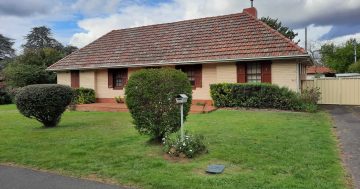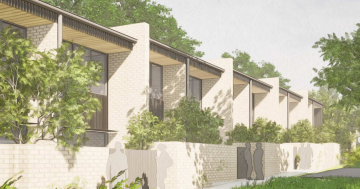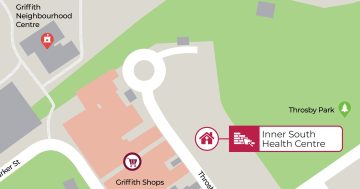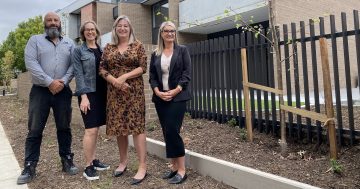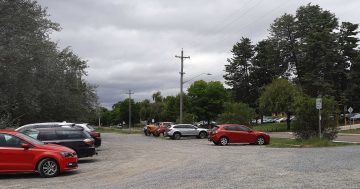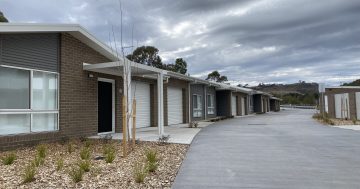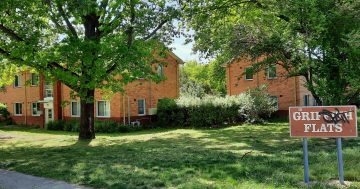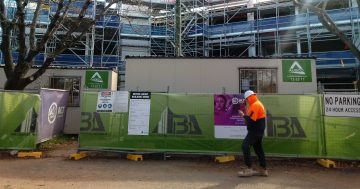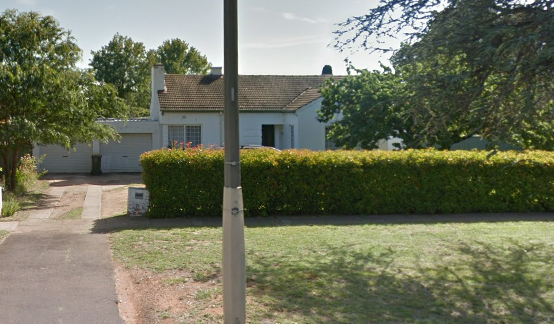
Housing ACT has 77 Captain Cook Crescent earmarked for three new Supportive Housing dwellings. Photo: Google Maps.
Housing ACT has been accused of failing to follow the government’s own planning rules in submitting a development application for three two-bedroom Supportive Housing dwellings to be built on a block in Griffith.
The Griffith Narrabundah Community Association says in a submission that the application for Supportive Housing is in name only, fails to comply with setback rules, does not provide enough outside space, and supplies such scant design information that it is impossible to assess whether much of it is compliant.
It claims Housing ACT is treating its tenants as second-class citizens by trying to build sub-standard dwellings.
It says Housing ACT should have to resubmit its application with sufficient information for the community and the planning authority to make a reasonable judgment about it.
“We are both disturbed and disappointed that the Government has proposed a development that does not, in so many ways, appear to comply with its own rules,” the association says.
“We are disturbed because the integrity of the planning system in the ACT is under threat when those who make the rules break them.”
The 1297 square metre site at 77 Captain Cook Crescent (Block 12 Section 71) is currently occupied by a three-bedroom house that will make way for the single-storey Accessible Class C dwellings.
The association says it welcomes the redevelopment of older dwellings for Adaptable Housing so public housing tenants can stay in the neighbourhood and age in place.
But the planning rules only allow two Adaptable dwellings on an RZ1 site. The Association says Housing ACT is trying to get around this by claiming the proposal is for Supportive Housing.
Any more than two Adaptable dwellings would need to be built in an RZ2 zone, it says.
The Association says there is no evidence of the kinds of support services that usually accompany Supportive Housing and the proponent advised during pre-DA consultation that the new dwellings would be available for all eligible tenants.
The Association says that if the DA were for Adaptable Housing rather than the claimed ‘Supportive’ Housing, it could not be approved because it would fail the Replacement Housing Rule of the Multi-unit Housing Development Code which requires that at least one of the dwellings in a multi-unit development have at least as many bedrooms as the demolished dwelling.
It says the DA is in breach of the front, side and rear setback rules and the Principal Private Open Space rules.
“While it is understandable that a private developer might seek to extract the widest possible interpretation of qualitative criteria from ACTPLA, such considerations should not apply to Housing ACT,” the Association says.
“Government tenants in Government-owned Adaptable Housing or Supportive Housing dwellings should not be asked, or expected, to endure sub-standard conditions.
“We would expect the government would set the standards and lead by example. Unfortunately, this does not appear to be happening.”
The Association also says the proposal would not comply with the government’s proposed DV369 requiring sufficient tree canopy cover and green space on residential blocks.
It says at present, about 67 per cent of the block is covered by planting area, but the new proposal only provides at most 22 per cent.
“One would expect a government body to take pains to ensure that any proposal brought forward was compliant with this Draft Variation,” the association says.
There are also no shadow diagrams to support claims of good solar access.
The three dwellings and attached garages have a total GFA of 400 square metres or 30 per cent of the block, but the association says there are no measurements to confirm this.
The Association says Housing ACT has taken a “mark your own homework” approach that, if accepted by ACTPLA, means we “may as well abandon the DA approval process”.
The $731,450 project also requires a lease change to allow supportive housing.
The Association says it would support a proposal for two dwellings on the site.
Housing ACT has lodged a similar DA for 18 Lockyer Street nearby.












